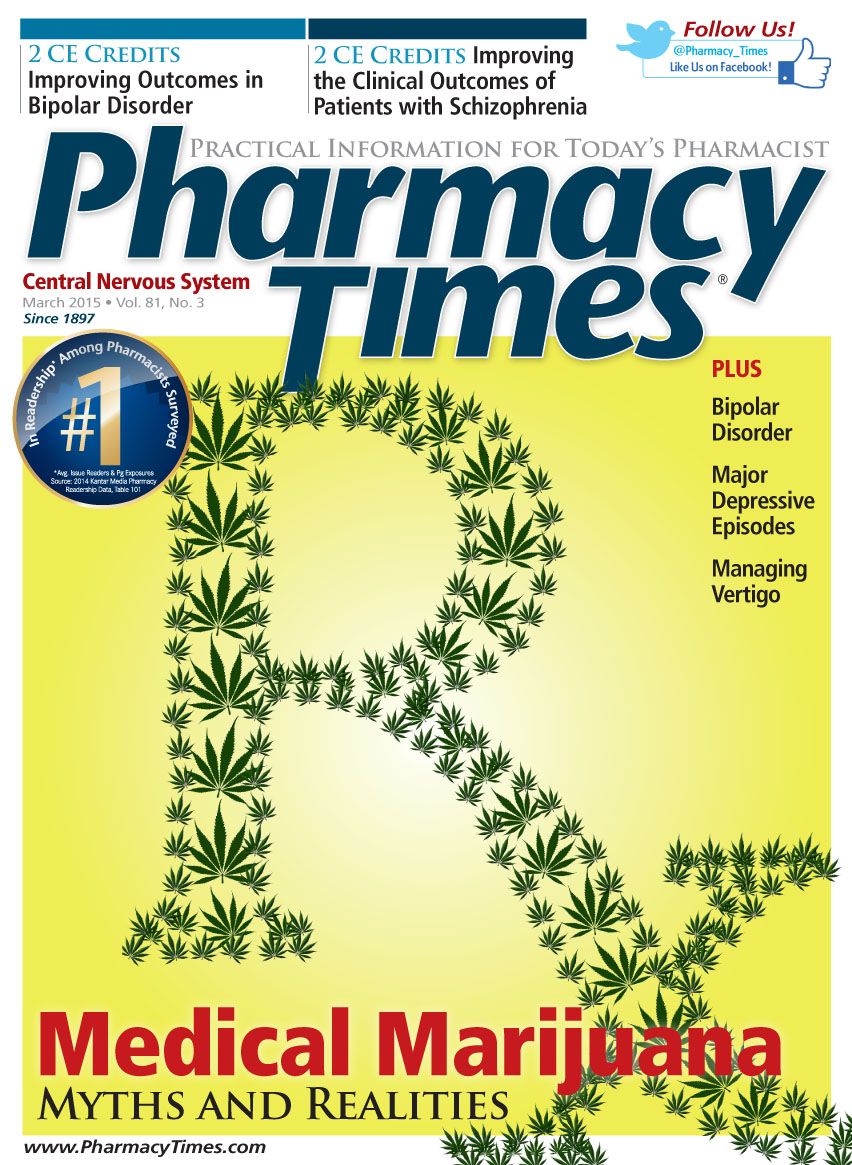Publication
Article
Pharmacy Times
Case Studies (March 2015)
What should these pharmacists do?
CASE 1
FB is a 30-year-old man who comes to your pharmacy complaining of a pruritic, erythematous, scaly lesion covering the right side of his neck and extending onto parts of his face. He tells you that the skin on his neck is normally dry and itchy, but only becomes this severe about once or twice a year. He has had no notable contact with any plants or animals recently. You are able to diagnose this as a flare of mild to moderate atopic dermatitis, or eczema. FB describes his skin care practices and regular moisturizer use, and asks for help choosing an OTC product to treat this flare.
As the pharmacist, what would you recommend to FB for treating his eczema?
CASE 2
CB is a 55-year-old man with a history of type 2 diabetes mellitus and diabetic peripheral neuropathy. He is currently taking gabapentin for his neuropathy, with unsatisfactory relief. His medical history is significant for obesity and hypertension. His other medications include lisinopril/ hydrochlorothiazide 40/25 mg daily, metformin 500 mg twice daily, and NovoLog 70/30 10 units subcutaneously 3 times a day. His last recorded glycated hemoglobin level was 7.5%. CB says that he has been feeling depressed lately, and he comes to your pharmacy with a prescription for fluoxetine 20 mg daily from his new psychiatrist. CB asks, “I’ve heard some people take antidepressants for their diabetic nerve pain. Will my new medication treat my depression and help lessen my nerve pain also?”
As the pharmacist, how do you respond?
ANSWERS
Case 1: The use of topical corticosteroids (TCSs) is recommended by the American Academy of Dermatology and the American Academy of Family Physicians if good skin care and moisturizers fail to resolve eczema symptoms. Seven classes of TCSs are available in a variety of strengths and preparations (eg, lotions, creams, ointments). Class I TCSs, such as clobetasol propionate, are the most potent; class VII agents, such as hydrocortisone acetate, are the least potent. Within a class, no specific agent is more efficacious than the others, so patient preference, cost, and location of the lesion should guide medication selection. A reasonable strategy is to start at the lowest appropriate potency and titrate upward if needed. For thin skin areas, such as the face and neck, guidelines recommend low- to moderate-potency TCSs for up to 2 weeks for significant flares. Therefore, a 2-week trial of an OTC TCS (eg, hydrocortisone 1% cream or ointment applied to the affected area twice daily) would be appropriate for FB. If the flare resolves, the TCS can be continued as maintenance therapy (1 to 2 times/wk) to prevent relapses in areas in which flares are common. If FB does not respond to the use of the OTC TCS, he should be referred to a dermatologist, who may prescribe a stronger, prescription-strength TCS.
Case 2: There is no demonstrated efficacy of fluoxetine in improving painful diabetic neuropathy (PDN). Along with gabapentin and pregabalin, certain antidepressants are among the initial therapies of choice for the treatment of PDN. Specifically, the tricyclic antidepressants (TCAs) duloxetine and venlafaxine are recommended for the treatment of PDN by the recent guidelines of 5 organizations (ie, the American Association of Neuromuscular & Electrodiagnostic Medicine, the National Institute for Health and Care Excellence, the European Federation of Neurological Sciences, American Association of Clinical Endocrinologists, and the Toronto Expert Panel on Diabetic Neuropathy). However, in most patients with PDN, monotherapy at maximum-tolerated doses provides inadequate relief of pain, so a second agent is often needed. The recommended second-line agents to use in combination with gabapentin for treating PDN include TCAs (eg, amitriptyline, imipramine), serotonin norepinephrine reuptake inhibitors (SNRIs; venlafaxine, duloxetine), tramadol, opioids, or topical agents (eg, capsaicin). Considering CB’s comorbid depression, an antidepressant that also treats PDN may be the best option for him. Compared with TCAs, SNRIs have the advantages of once-daily dosing and better tolerability; therefore, duloxetine 60 mg daily or venlafaxine XR 75 mg daily might be appropriate alternatives for CB. As the pharmacist, you should suggest that CB consult both the doctors treating his PDN and depression to decide on the optimal agent.
Michael Whitley is a PharmD candidate at the University of Connecticut School of Pharmacy. Dr. Mearns is health economics and outcomes research fellow at Hartford Hospital Evidence-Based Practice Center. Dr. Coleman is a professor of pharmacy practice, as well as codirector and methods chief at Hartford Hospital Evidence-Based Practice Center at the University of Connecticut School of Pharmacy.

Newsletter
Stay informed on drug updates, treatment guidelines, and pharmacy practice trends—subscribe to Pharmacy Times for weekly clinical insights.






